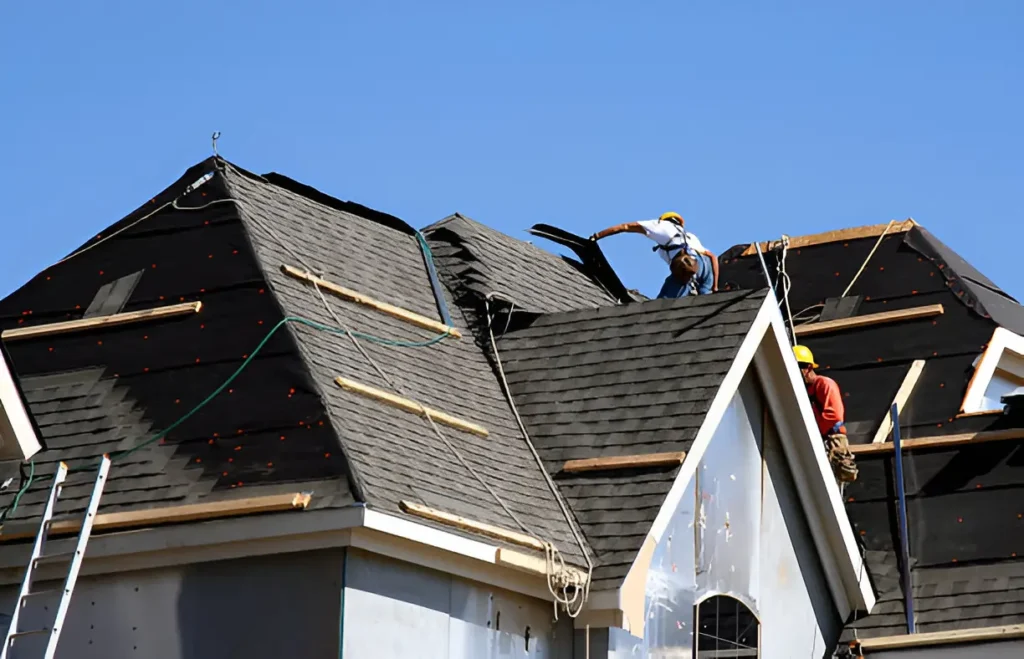Replacing your roof is a big decision. Whether it’s damaged, leaking, or outdated, a new roof improves your home’s protection, curb appeal, and value. Many homeowners have similar questions when starting this project. If you’re considering a roof replacement, this guide will answer common questions and help you move forward confidently.
How Do I Know If I Really Need a New Roof?
There are several signs that your roof might need replacing. These include:
- Shingles that are cracked, curled, or missing
- Frequent leaks or water damage inside your home
- A roof that’s 20 to 30 years old
- Visible sagging or dark spots on the roof
- Granules from shingles appearing in gutters
Some issues can be repaired, but major damage or an old roof may need a full replacement. Recent storms or harsh winters could have caused more wear than expected.
How Long Does a Roof Replacement Take?
The installation time for a new roof depends on factors such as your home’s size, the chosen roofing materials, and prevailing weather conditions. On average, most roof replacements are completed within one to three days. However, unexpected delays can occur, particularly during winter or early spring when weather can be unpredictable. A skilled roofing professional will provide an accurate timeline and keep you informed every step of the way.
What Should I Expect During the Installation Process?
Before starting the job, the crew will protect your home’s surroundings, including flower beds, driveways, and outdoor furniture. They will remove the old roofing materials and inspect the roof deck for damage, making any necessary repairs before installing the new roof layer by layer, finishing with the ridge caps. Getting a new roof in Sandy comes with some noise and activity, but a skilled team will minimize disruptions and leave your property spotless after the project.
How Much Does a New Roof Cost?
Roofing costs depend on factors like home size, roofing material, and roof design complexity—features like steep pitches or multiple valleys can raise the price. While exact figures vary, most homeowners should budget several thousand dollars for a full replacement. With weather ranging from heavy snow to intense heat, investing in quality materials and professional installation is key. Though the upfront cost may be higher, it pays off in durability, energy efficiency, and fewer repairs over time.
Will a New Roof Increase My Home’s Value?
A new roof can significantly enhance your home’s resale value and curb appeal. Prospective buyers often see it as a major advantage, eliminating concerns about immediate repairs or replacements after purchase. If you’re planning to sell, upgrading your roof can make your property more appealing and even speed up the sale process. Plus, it provides peace of mind, ensuring your home is well-protected while it’s on the market.
When considering a new roof, it’s essential to explore all available options, especially if you’re dealing with a flat roof. Flat roofing systems offer unique benefits and challenges, making it crucial to understand the materials and maintenance involved. For those interested in learning more about flat roofing solutions, you can view full details to gain insights into the best practices and materials suited for your needs. This information can help you make an informed decision, ensuring your new roof not only enhances your property’s aesthetic appeal but also provides long-lasting protection.
Can I Stay in My Home During the Roof Replacement?
In most cases, you can stay in your home during a roof replacement. However, expect loud noise from tools and hammering throughout the day. If you work from home, have pets, or young children sensitive to noise, consider making other arrangements. Contractors prioritize safety and aim to make the process smooth and hassle-free for homeowners.
When Is the Best Time to Replace My Roof?
The best time to replace your roof is during dry, mild weather, typically from late spring to early fall. These months provide stable conditions that make the installation process smoother and more efficient. However, if your roof is leaking or severely damaged, waiting for the ideal season isn’t worth the risk—delaying repairs can lead to more extensive and costly problems over time.
Conclusion
Replacing your roof is a significant home improvement project, but it doesn’t have to feel daunting. By understanding the process, timeline, costs, and benefits, you can make confident, informed decisions to safeguard your home and investment. For homeowners planning a roof replacement, addressing key questions brings you closer to a safer, more energy-efficient, and visually appealing home.
Read more: The Impact of Early Group Environments on Childhood Development – Dimensions Script
Why is Pest Control Important in a Food Establishment? – Dimensions Script
Face Swap AI: Exploring the Latest in Digital Creation and Editing


